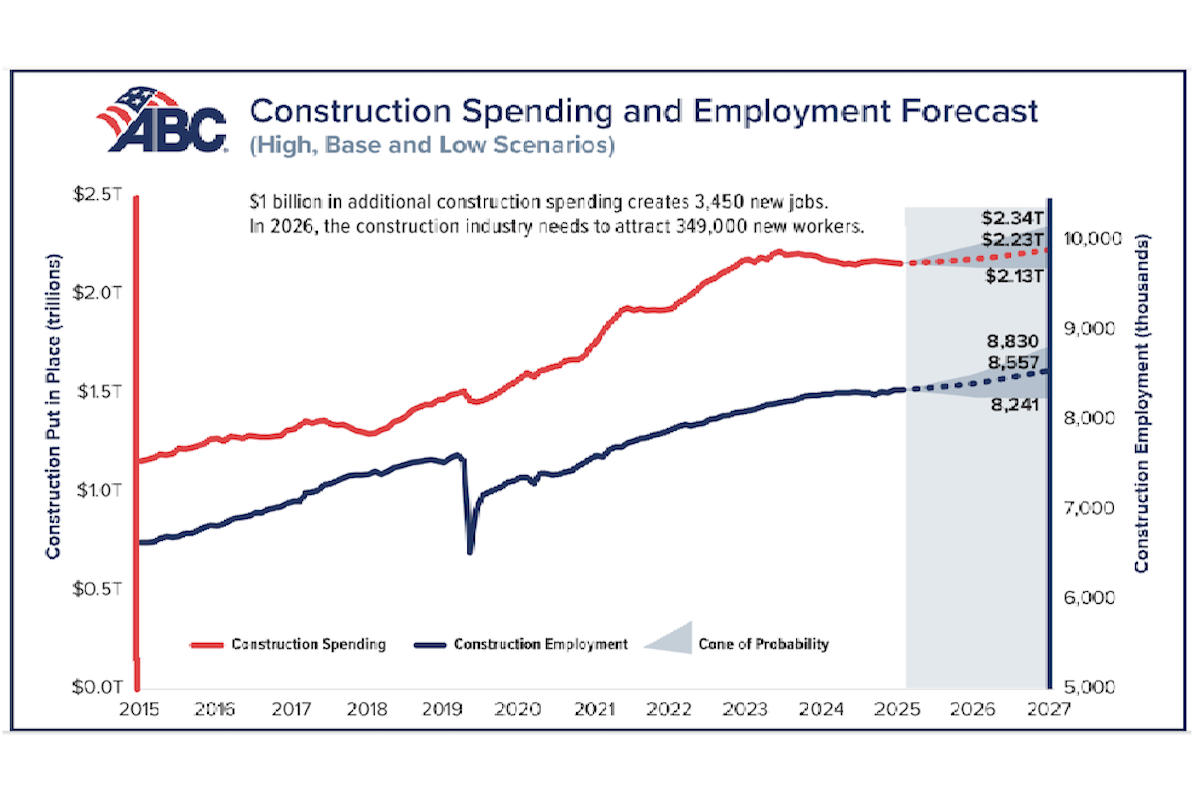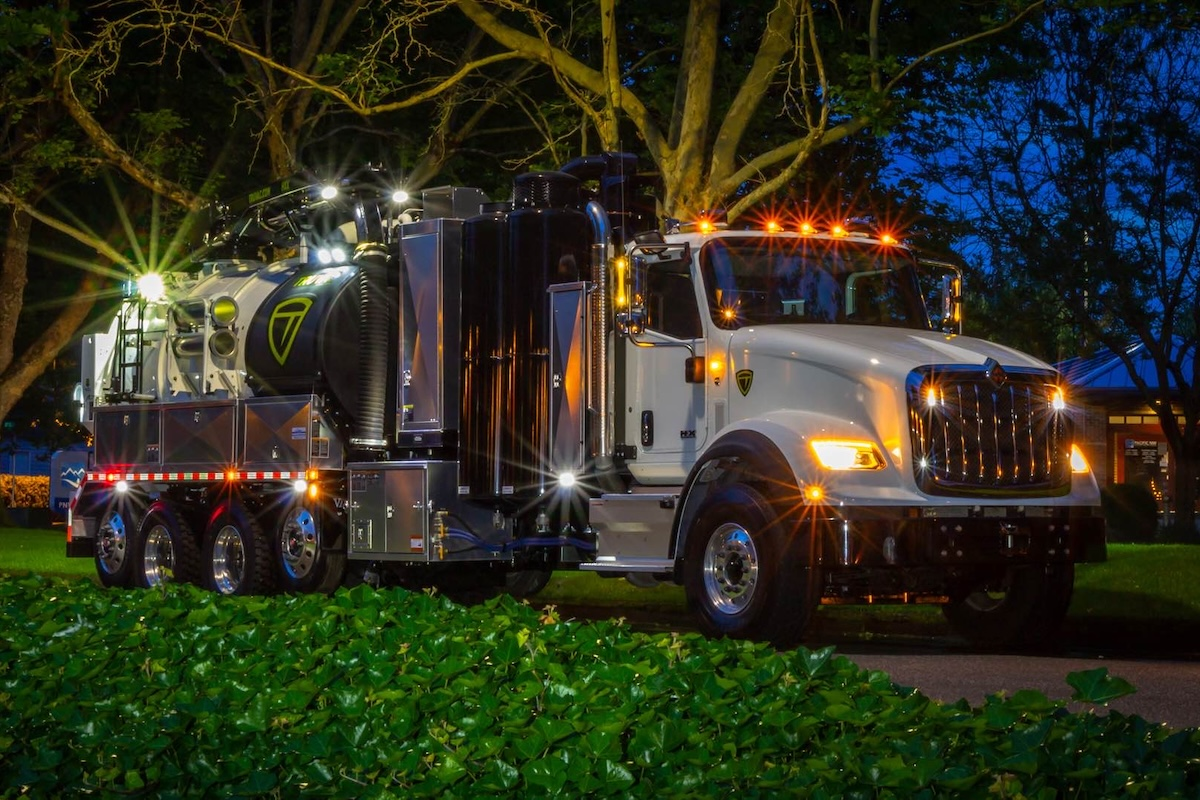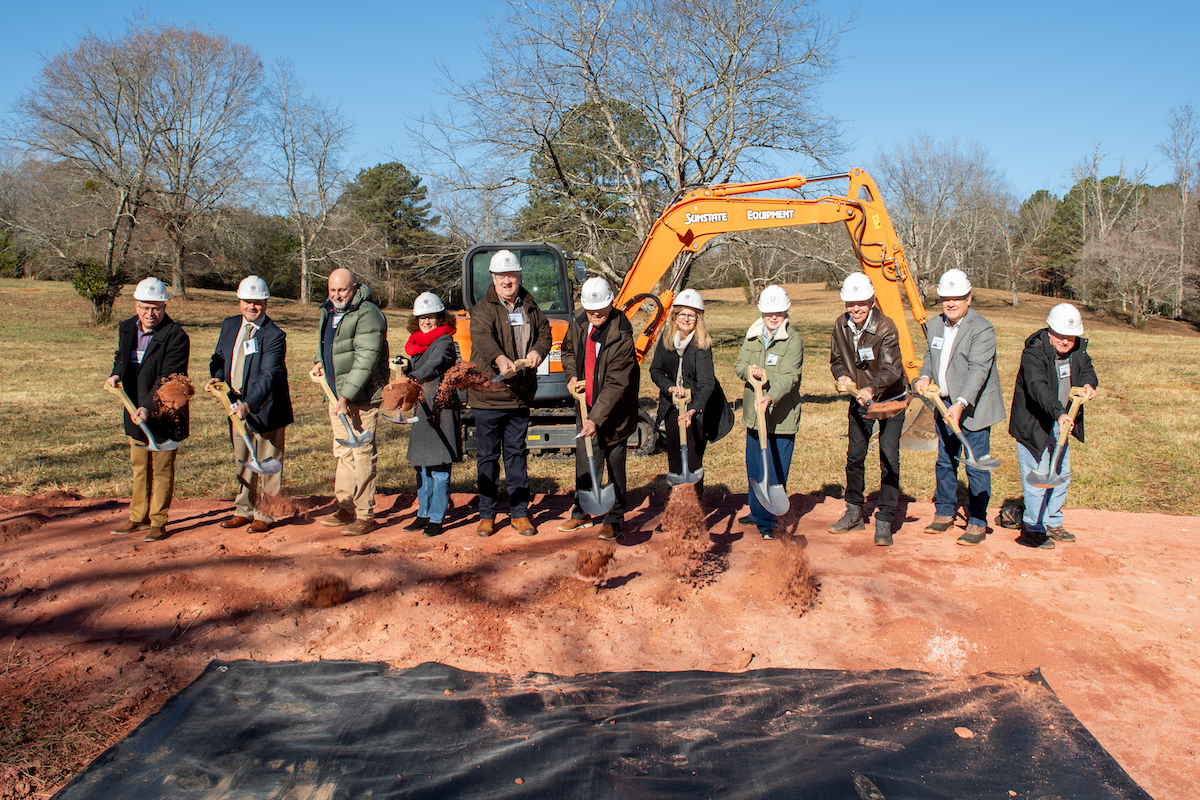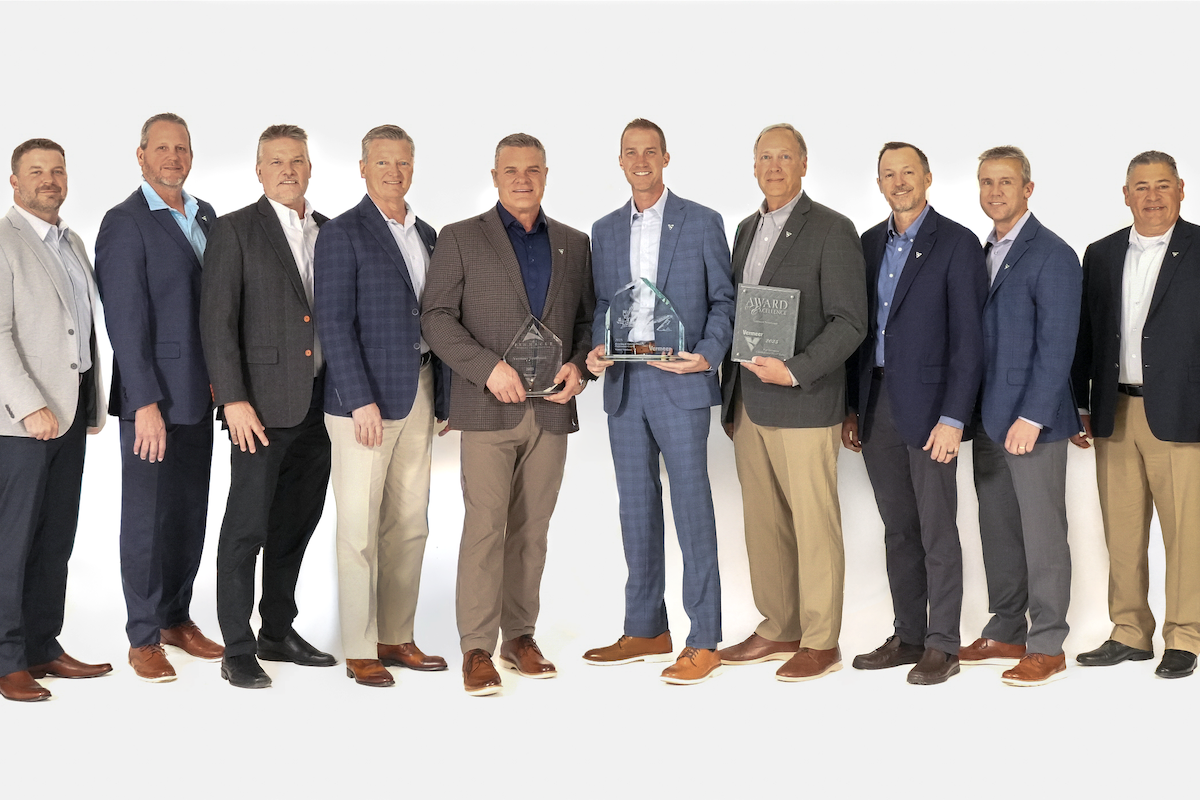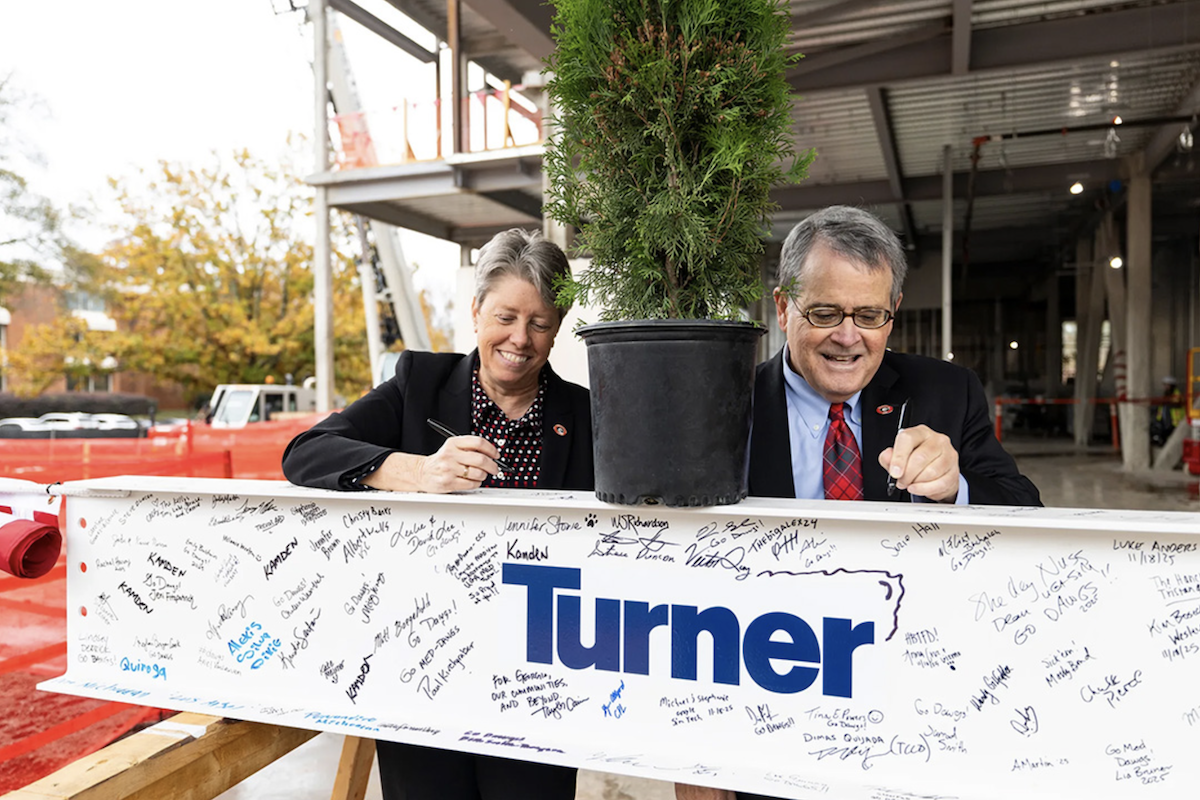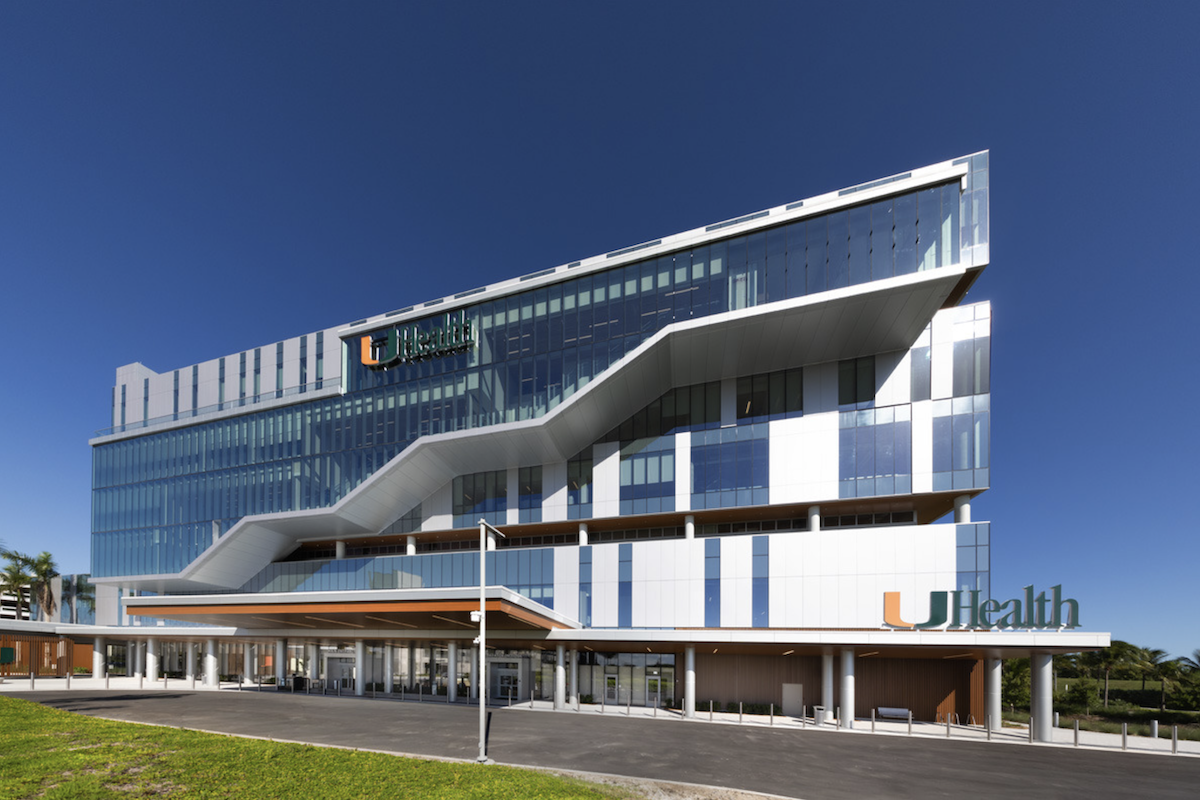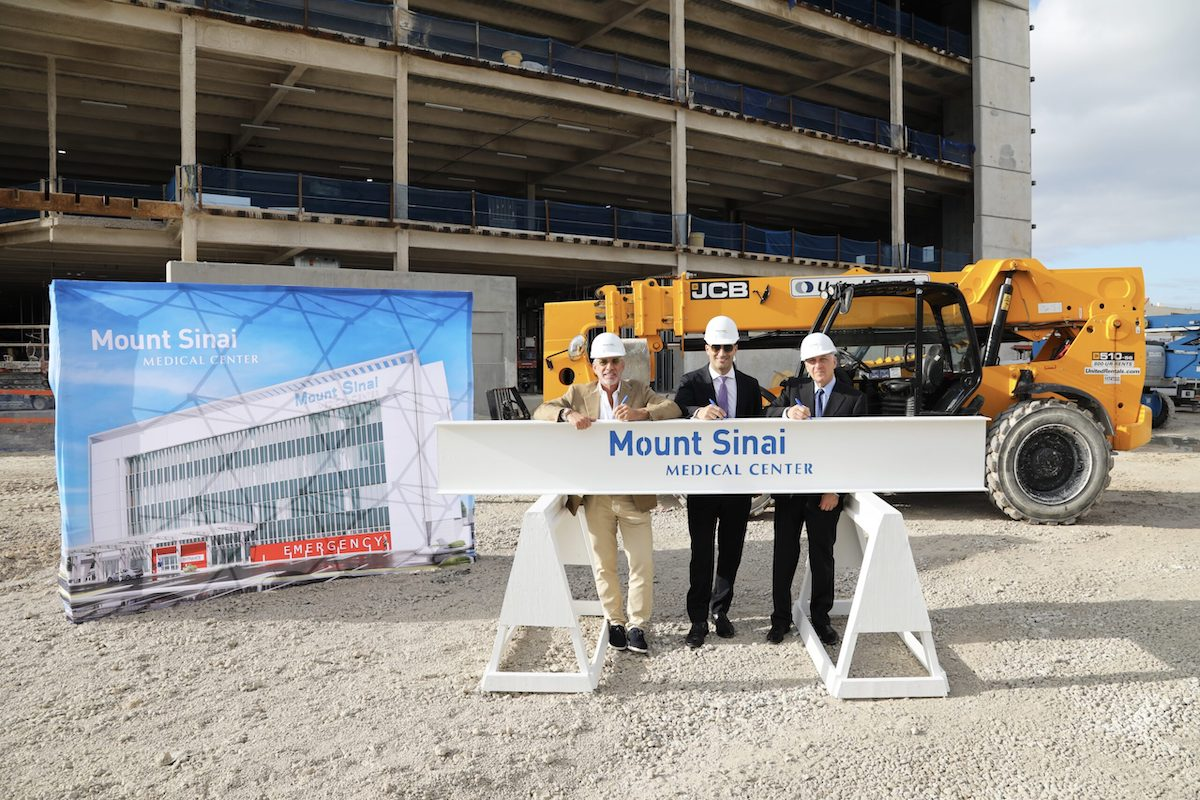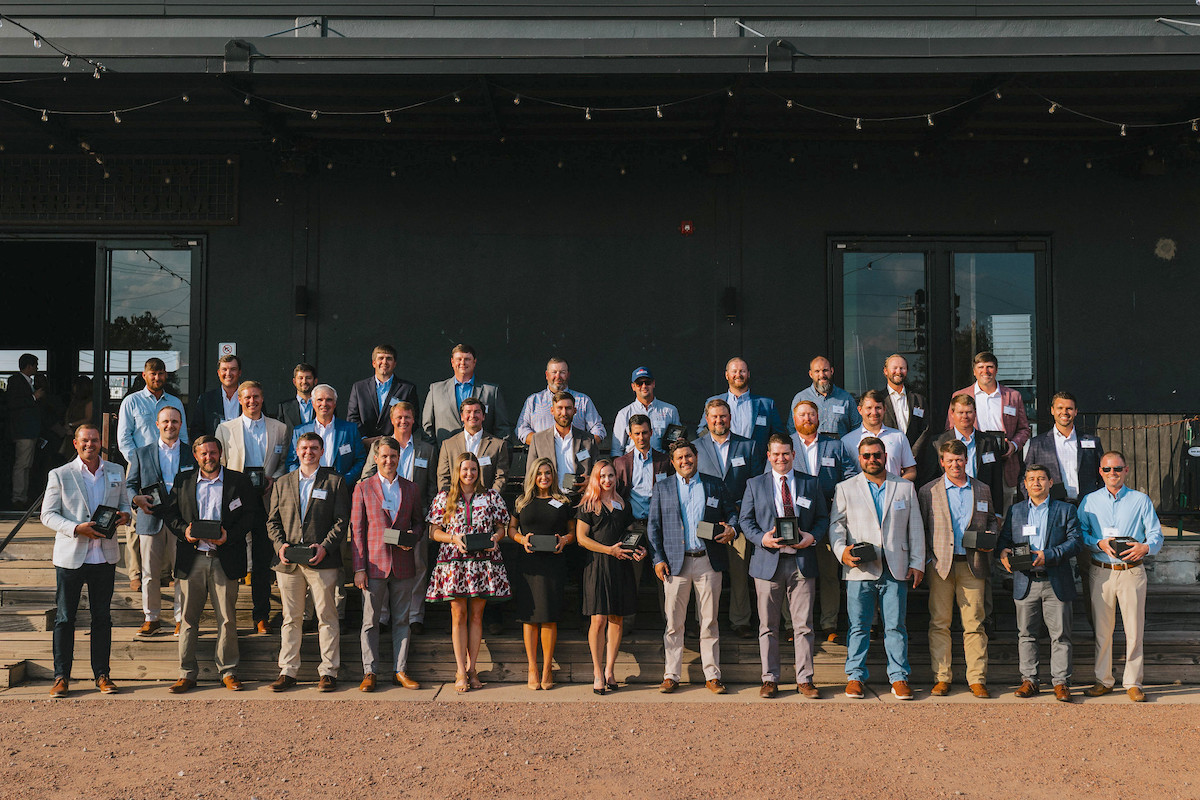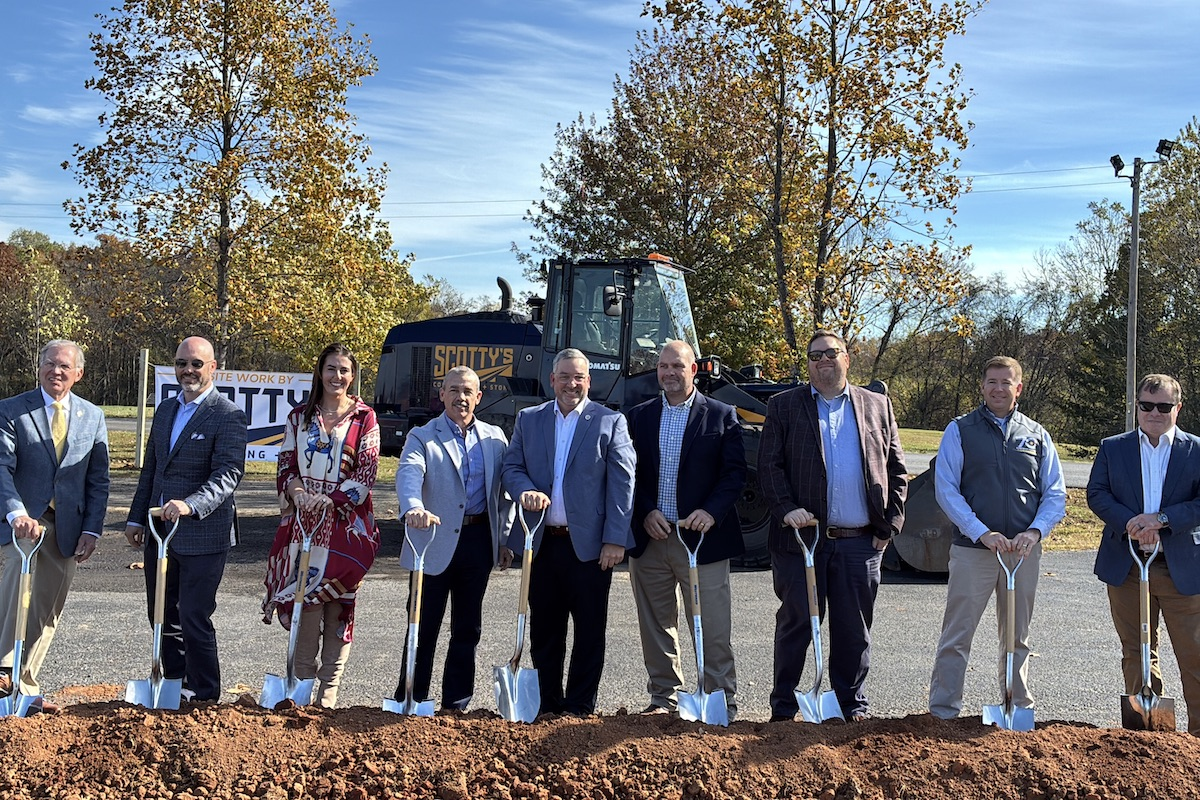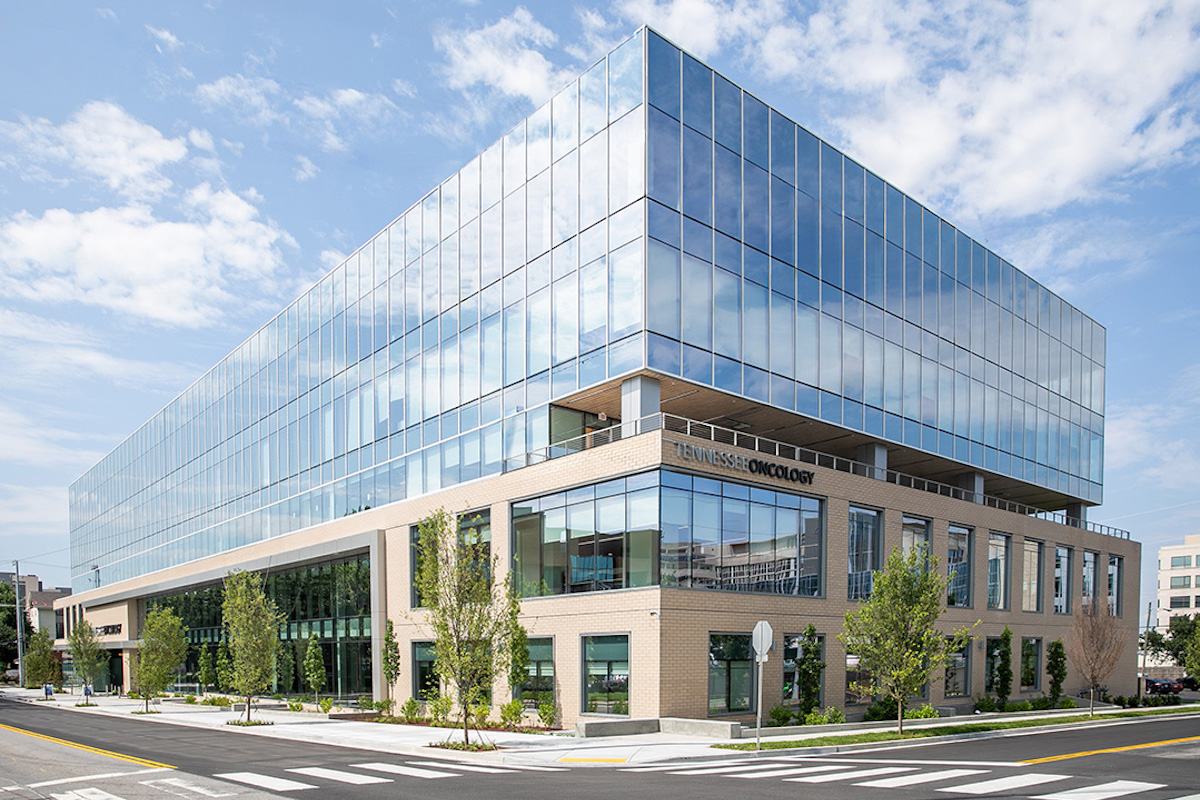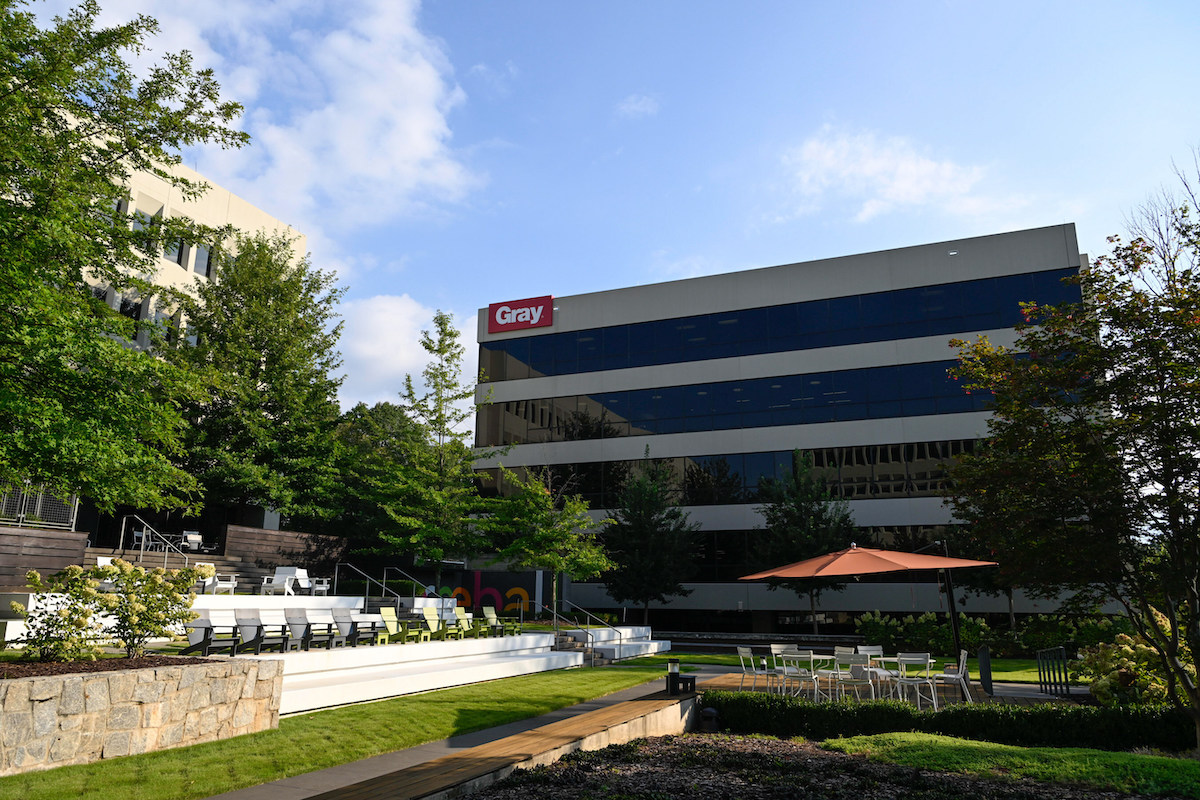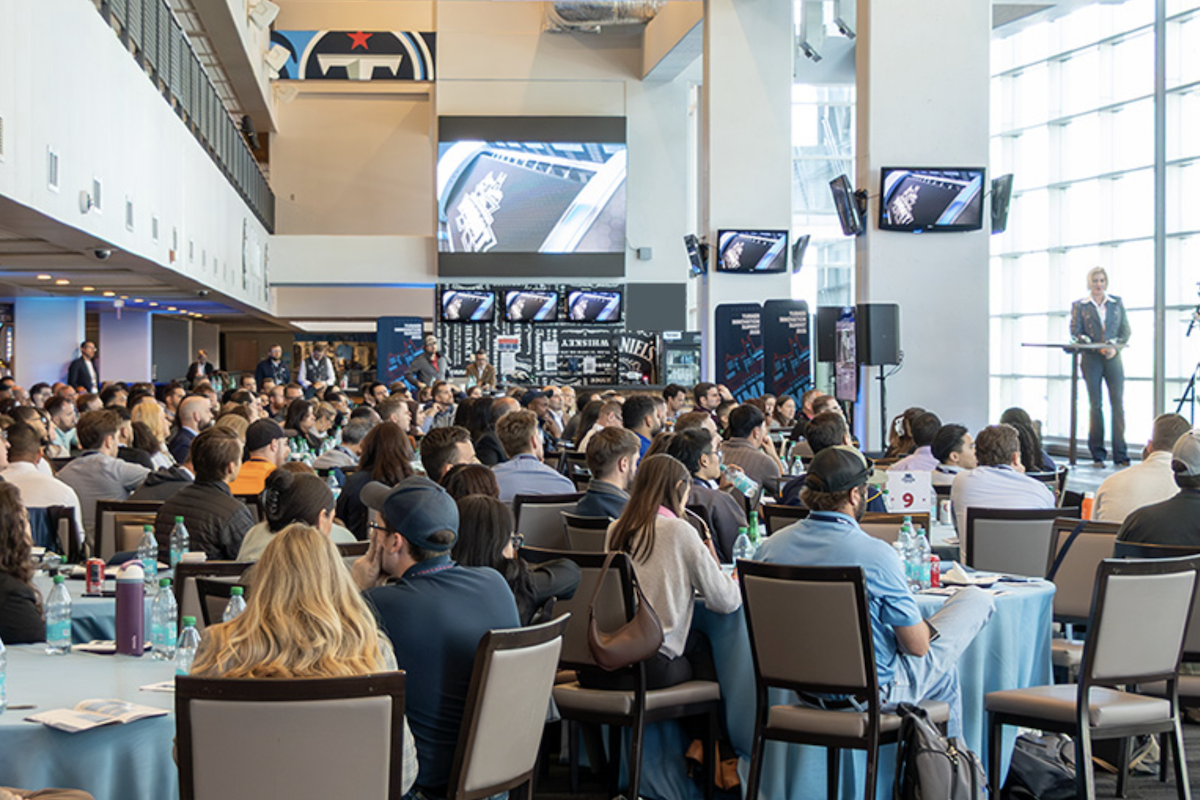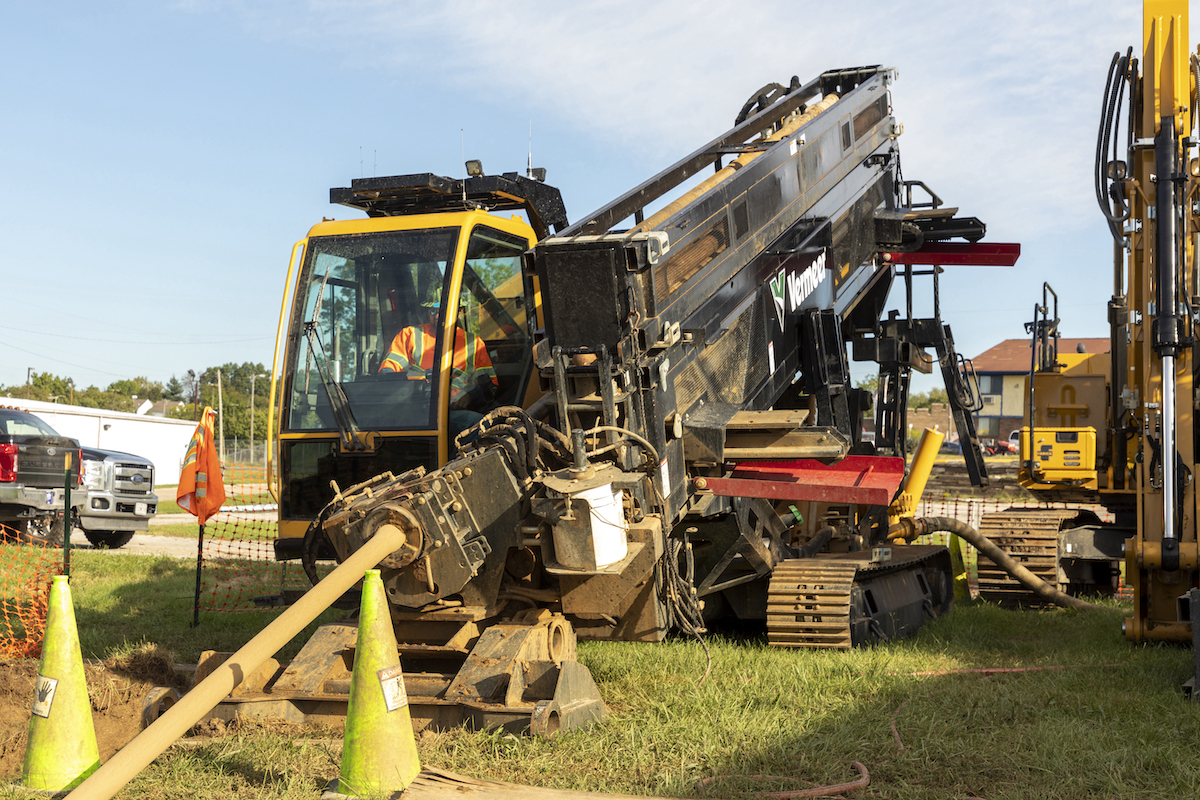Diamond grinding removes a thin layer of the hardened concrete surface using a self-propelled machine outfitted with a series of closely spaced diamond saw blades mounted on a rotating shaft. Unlike diamond-impregnated carbide bits, which use impact to chip away the concrete surface, diamond grinding blades use abrasion to gently remove the surface layer without the risk of introducing microcracking of the aggregates. After diamond grinding, the pavement texture consists of grooves and lands, with the grooves laying beneath the pavement interface.
Diamond grinding has been in use since the 1960s, with nearly 20 million square yards of pavement diamond ground each year in the United States alone. In addition to using diamond grinding to improve the performance of existing, in-service pavements, several state DOTs specify diamond ground surfaces as the final surface on newly placed portland cement concrete pavement (PCCP). The technique is also becoming more popular for cost-effective remediation of ride quality in asphalt pavements.
Diamond grinding and safety grooving are the clear solution to remediating the surface texture of new asphalt and concrete roadways as well as bridge decks. Not only is it one of the cheapest highway treatments available, it’s likely the only treatment that is often cost- and carbon-negative.
Vehicle accidents increase when there is a loss of friction between the tire and pavement surface and conditions become slippery. Highway departments have found the best way to decrease accidents during inclement weather is to remove water from the surface and increase the traction between the tire and the road. Safety grooving is a technique of surface saw cutting designed specifically to improve friction and reduce water ponding. Grooving a pavement’s surface increases traction, reduces hydroplaning, minimizes splash and spray, and provides a more-effective braking surface. Unlike diamond grinding, safety grooving is not attributed to an improved ride quality.

| Your local Komatsu America Corp dealer |
|---|
| Linder Industrial Machinery |
Municipalities and departments of transportation find grooving is an easily constructed and economical surface treatment that increases driver safety in wet conditions and saves on the costs of replacing or overlaying the pavement surface.
To groove a pavement surface, machines equipped with circular, diamond-tipped saw blades are used to cut grooves into the surface. The blades are mounted and spaced on a horizontal shaft and are cooled constantly by water pumped from a tanker, which is recovered by an onboard vacuum system.
These discrete channels can be constructed transversely or longitudinally into concrete and asphalt surfaces. Engineers typically specify grooves 1/8- to 3/16-inch deep and approximately 1/10- to 1/8-inch wide. The spacing is typically 3/4-inch center-to-center — which leaves too large of a landing area between blades to impact the surfaces profile — although random spacing of blades is used at times when grooving transversely to control tire/pavement noise.
Safety grooving is less expensive than diamond grinding as it requires fewer diamond blades to perform, but it is the most-effective tool for mitigating hydroplaning.
NGCS is the smoothest and most quiet pavement surface treatment available. In an effort to create a quieter concrete pavement surface, Purdue University conducted research to develop a machined surface texture that would offer superior noise characteristics.
NGCS consists of a three-step process:
- If the pavement has localized roughness, it should be removed using a bump grind with a conventional diamond grinding head. The goal of this step is to have no significant bumps or faults and to have an average international roughness index (IRI) at or below 80 inches per mile.
- Production grinding using a NGCS grinding head to remove approximately 1/8 inch of surface material over 100 percent of the surface area of the project. A NGCS head is a diamond grinding head that has a tighter spacing between saw blades than a traditional diamond grinding head. This tight spacing will result in the removal of positive or upward texture typically left between saw blades, offering a very quiet riding surface. The IRI after this step typically is at or below 45 inches per mile.
- Safety groove the surface. The safety grooving also adds the benefits of improved macro texture for friction and improved drainage to prevent hydroplaning.
The NGCS was conceived as a “manufactured surface” which would result in consistent and predictable properties at the time of construction and throughout its life. The NGCS surface has met the low noise goals and demonstrated the lowest variability in as-constructed results to date. With the improved lateral stability and hydroplaning resistance afforded by the NGCS texture, there are additional benefits than just noise reduction. As demonstrated by quiet pavement research efforts, NGCS surfaces also produced the smoothest pavements of any texture evaluated.
NGCS is the most superior texture available for new and existing concrete pavements, combining all of the forementioned benefits offered by saw-cut surface textures.
Friction testing of the surfaces for over a decade has indicated a stable surface with a good frictional resistance. Initial concerns that the flush grind process would produce a low-friction surface were not accurate. The grooving used in the NGCS provides similar ribbed and smooth tire test results and enhances hydroplaning resistance.
Today, 14 states have constructed NGCS surfaces and two major state quiet pavement research efforts have evaluated this texture. Millions of square yards of NGCS have been constructed across the globe with positive results.
Many states do not have the benefit of clear, localized guidance on disposal methods for CGR. This leads to a situation in which CGR disposal is potentially posing unnecessary costs for projects — and leaves the beneficial effects of slurry underutilized.
Often, states limit how much slurry can be discharged along the roadside during the diamond grinding process. But hauling slurry off-site for processing and disposal is costly for DOTs and for taxpayers. The elimination of unnecessary regulations in areas with site conditions that allow for the discharge of CGR directly to the road’s shoulder would benefit roadway owners and taxpayers by reducing construction costs.
To determine the real impact of slurry on roadside soil and vegetation, multiple studies have been performed. They all have found slurry to be safe. For more information, see the IGGA white paper, “Studies Show Slurry Roadside Disposal Is Safe.”
In accordance with research showing a lack of negative environmental effects from slurry disposal along roadways, states are changing regulations. For example, Minnesota recently enacted legislation redefining their solid waste definition throughout the state, exempting concrete saw-cut slurry from the solid waste classification and allowing slurry to be spread along adjacent slopes. This was done in part because there was no evidence showing slurry constituted a threat to the environment.
In the [white paper mentioned above], IGGA developed best management practices for CGR disposal to help slurry byproduct continue to be handled in a professional, environmentally responsible way. When following the best management practices, studies show slurry is not harmful to soil or plant life and can even be beneficial as a soil additive.
For more information on these topics, visit igga.net.








